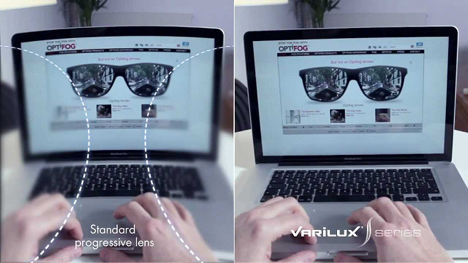Progressive lenses feature one continuous field of vision with no lines, unlike typical bifocals which only provide two distinct viewing areas with a noticeable line between the two which can be frustrating to wearers.
Signs you may need progressive lenses:
- Blurred vision when reading up close and/or computer distance.
- You find yourself holding reading material at arm’s length and/or enlarging the font size on your computer screen.
- You have trouble seeing in dim lighting, like reading a menu in a dark restaurant.
- You experience eyestrain, tired eyes, or headaches after sustained paper and computer work.
It all started in France in 1959 when Varilux first launched progressive lens into the market. Trademarked by Essilor International, Varilux has been the most recognized brand of progressive lenses ever since its birth, providing individuals the ability to see far, intermediate and near vision. Varilux lenses are designed to treat presbyopia, which is a normal decline in close-range focusing ability of our eyes due to a loss of elasticity of the focusing lens inside the eye.
Through a unique and trademarked research process LiveOptics, Varilux focuses on the wearer’s needs. Physiological researches combined with the latest technological innovations allow the continuous development of performing lenses.
The illustration below provides a visual presentation between bifocals, standard progressives and Varliux progressives:
Standard progressives have the side blur, forcing most individuals to look for the “sweet spot” or through a small area of vision. On the contrary, Varilux progressive lenses have improved their progressive technology and minimized the side blur, giving individuals more area to look through. The link below provides more information about their progressive lenses.
Tags: Optometry, Eye Exams, Eyeglasses



